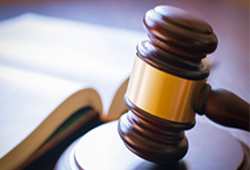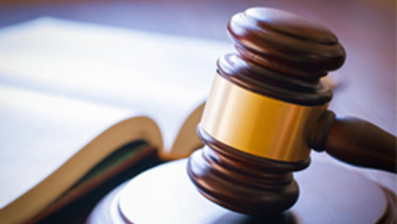 As we recently reported, a federal jury awarded Amgen $70 million in damages last week after finding that Hospira’s manufacture of 14 batches of drug substance between 2013 and 2015 was not protected under the safe harbor provisions of 35 U.S.C. § 271(e)(1), that the manufacture of those batches infringed one of Amgen’s two Epogen® (EPO) patents, and that the infringed patent (the ’298 patent) was not invalid. Today, Hospira filed a Rule 50(a) Motion for Judgment as a Matter of Law on the issues of (1) whether Hospira is protected by the § 271(e)(1) safe harbor; (2) infringement of the patents-in-suit (the ’349 and ’298 patents) ; (3) invalidity of the ’298 patent-in-suit; and (4) the amount of damages awarded to Amgen. In essence, this motion asks the district court to modify or reverse its prior judgment and damages award against Hospira, even before any appeal to the Federal Circuit gets filed. A copy of Hospira’s Memorandum of Law in support of the motion can be found here.
As we recently reported, a federal jury awarded Amgen $70 million in damages last week after finding that Hospira’s manufacture of 14 batches of drug substance between 2013 and 2015 was not protected under the safe harbor provisions of 35 U.S.C. § 271(e)(1), that the manufacture of those batches infringed one of Amgen’s two Epogen® (EPO) patents, and that the infringed patent (the ’298 patent) was not invalid. Today, Hospira filed a Rule 50(a) Motion for Judgment as a Matter of Law on the issues of (1) whether Hospira is protected by the § 271(e)(1) safe harbor; (2) infringement of the patents-in-suit (the ’349 and ’298 patents) ; (3) invalidity of the ’298 patent-in-suit; and (4) the amount of damages awarded to Amgen. In essence, this motion asks the district court to modify or reverse its prior judgment and damages award against Hospira, even before any appeal to the Federal Circuit gets filed. A copy of Hospira’s Memorandum of Law in support of the motion can be found here.
First, Hospira argues that no reasonable jury could have concluded, based on the record at trial, that the safe harbor did not apply because “all of Hospira’s allegedly infringing drug substance batches were used for purposes reasonably related to obtaining FDA approval, including biosimilarity, clinical, stability, process performance qualification (‘PPQ’), process validation, continued process verification (‘CPV’), pre-approval inspection (‘PAI’), and revising product specifications.” Hospira asserts that Amgen’s evidence of a commercial purpose behind Hospira’s manufacture of the batches failed to rebut the evidence supporting safe harbor because “any other commercial purpose or motive in making the batches, if any, does not remove the batches from the Safe Harbor protection” and is “irrelevant to whether Hospira is entitled to Safe Harbor protection” under the law.
Second, Hospira argues that the Court should grant judgment as a matter of law of non-infringement with respect both the ’349 and ’298 patents-in-suit. (The jury found that the ’349 patent was not infringed, but that the asserted claims of the ’298 patent were infringed.) Hospira asserts that Amgen failed to present legally sufficient evidence from which a reasonable jury could find literal infringement of any of the asserted claims of the ’349 and ’298 patents, and, additionally, that a finding of infringement of the ’298 patent under 35 U.S.C. § 271(e)(2)(C) is unavailable as a matter of law because the ’298 patent has expired.
Third, Hospira argues that it presented evidence that would preclude a reasonable jury from reaching any determination other than that the asserted claims of the ’298 patent as construed by the Court are invalid as being both anticipated and obvious over the prior art. (The jury found that these claims were not anticipated and non-obvious.)
Finally, Hospira argues that Amgen “failed to present sufficient evidence for a reasonable jury to determine that it is entitled to a damages award of $154 million to $170 million, or to any amount greater than $1.5 million per batch, if sold.” (The jury awarded Amgen $70 million, i.e., $5 million per infringing batch.)
Stay tuned to Big Molecule Watch for further developments.

